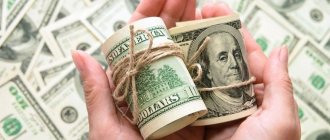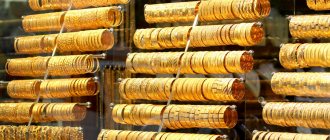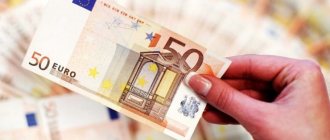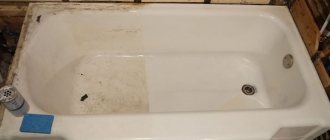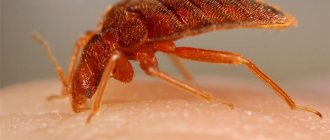Not every one of us comes across stacks of dollar bills every day in our lives, and when you have to do this periodically, you begin to worry whether it is real money or not? What should you pay attention to when faced with such a problem?
Banknotes of the new type are almost not counterfeited, since there is a security strip, which makes them much more difficult to counterfeit.
100 dollar bill old and new
Although there are also fakes among them: scammers bet on the fact that not everyone is familiar with the new banknote.
Security level of the new $100 bill
Among old , counterfeits are much more common. Let's take a closer look at the original banknotes.
About counterfeit dollars: modern facts
A huge number of counterfeits are involved in the global circulation of dollars. For example, in 2011, approximately $220 million of dollars did not pass the authenticity test.
The largest number of counterfeit dollars is created in Peru, and until 2013, Colombia was the leader in this segment. Even if the images on such banknotes are correct, non-original paper is easily recognized using an infrared lamp.
In North Korea, quite high-quality counterfeits are created, which they began to call “super dollars.” According to experts, such banknotes are printed on American printing presses taken from the territory of the GDR during the unification of Germany. Money dye is purchased from a company in Switzerland, which supplies the mixture to the US Treasury. It is estimated that the DPRK receives about $25 million in income annually from counterfeit dollars.
Note! Each person is responsible for the security of their finances, so the consideration of the cash received must be approached very carefully. Ideally, use special detectors. If there are none, it is enough just to carefully examine the bills.
Professional verification methods
Banknotes are checked in the following ways:
- Using ultraviolet radiation. The fake glows entirely. The original does not luminesce; the rays are reflected only by the protective elements. The ribbon glows pink on both sides. Silk fibers embedded in paper also luminesce.
- Using infrared mode. On banknotes issued after 1996 you will see clear or white vertical stripes. Their location must match the sample. Deviations of 2-3 mm are allowed.
- Using a magnetic sensor. The paint contains a ferromagnetic component.
Where can you get fake dollars?
Counterfeit dollars can be found in a variety of places under any circumstances. Fraudsters most often use psychological factors to transfer such banknotes. In a stressful, hurried situation or at night, few people look at the money received from a person.
Counterfeiters try to target those people who do not know what a real dollar looks like. Fraudsters often operate near train stations or airports. In some cases, a counterfeit can even be given out at a bank.
Attention! When receiving a large sum of money in foreign currency, it is very important to consider each bill individually. Often among real banknotes there may be one or two counterfeit ones.
Letters and numbers on a banknote
Few people know how to check dollars for authenticity, having only the alphabet with them. A distinctive feature of a dollar bill is its set of numbers and letters. These are the symbols located in the upper left corner on the front of the banknote. You can see their location in more detail in the photo. What does the number mean and what does the letter mean?
The letter means a letter of the English alphabet, and the number shows the serial number of this letter in the English alphabet. Very often, counterfeiters do not even pay attention to this when counterfeiting a banknote; the letter and number must correspond to each other. To identify a banknote in this way, you only need the English alphabet and the ability to count the letters strictly in alphabetical order.
How to counterfeit 100 dollars
There are many ways to counterfeit a $100 bill. It all depends on the abilities and tools of the particular counterfeiter. One of the most common is the method of altering banknotes of a lower denomination. The ink is washed off from a $1 or $5 bill and then the $100 currency stamp is applied. The money feels real to the touch, but the portrait will be different.
They can also simply add two zeros to a $1 bill. There also remains a portrait of a one-dollar bill, and besides, exposure to ultraviolet light will immediately make it possible to determine whether it is counterfeit.
Other interesting facts
It will be interesting to know the following information about the 100 dollar bill and, in principle, about US banknotes:
- Depending on the denomination, banknotes are given a certain average lifespan. For example, 20 dollars can be in circulation for approximately 2 years, 100 dollars can last for 5 years, 10 dollars can last for 1.5 years, and so on. Also, money can withstand up to 4 thousand bends without any external defects.
- Almost half of the total dollar supply circulating within the United States is made up of $1 bills. This is the most common and popular banknote. But the rarest is the 2 dollar one; it is almost impossible to find it in free circulation. The latest release dates back to 2003.
- The largest banknote ever issued in the United States was the $100,000 bill. It entered circulation in 1934, but was soon discontinued. It was mainly used for interbank payments, being of particular value to the gangsters who went on a rampage in the 1930s. A portrait of the 28th President of America, Woodrow Wilson, was printed on the front.
- To ensure high-quality money circulation, the US Federal Reserve daily withdraws from circulation about 35 million banknotes, the total value of which is approximately $635 million. The same number of banknotes of different denominations, but of a new type, are put into circulation again.
- About 2/3 of the entire dollar money supply is concentrated outside the United States. According to experts, already in the 1970s. the ratio of “local” and “foreign” banknotes was approximately equal, and by the beginning of the 1980s. a systematic preponderance towards the “non-local” currency began to be observed. At the moment, only about 35-40% of all issued money circulates within the country.
- According to the US Secret Service, which ensures the security of the country's financial system, until the 1990s. the percentage of counterfeit banknotes was minimal. With the development of digital technologies, new opportunities have opened up for counterfeiters, who did not fail to take advantage of them. Relatively inexpensive copying equipment has become a tool in the hands of fraudsters, and the amount of counterfeit currency has increased dramatically. The latest statistics available to the public date from 2007-2008, and according to it, more than $103 million were seized worldwide during this period that did not correspond to the original samples. 2.5 thousand fraudsters were brought to criminal liability, most of whom “worked” outside the States. The main underground locations turned out to be production in Italy and South America (Ecuador, Colombia). North Korea has also been involved in large-scale crimes, specializing in counterfeiting $50 and $100 banknotes. The volume of counterfeit money was so impressive that the US government urgently began developing a new design and security levels for the $100 banknote.
- Currency production is concentrated only in the “hands” of two state-owned enterprises located in Washington and Fort Worth, Texas. The total workforce numbers about 3 thousand employees. Approximately 18-20 tons of ink are consumed daily for printing.
- The name "bucks", often used in slang, comes from the English "buk". The word meant deer skin, which served as the equivalent of currency during the era of the conquistadors. The valuable trophy was exchanged with the Indians by barter - for gunpowder and vodka.
$100 Authentication
There are currently two types of $100 banknotes in circulation: old and new. A complete update began back in 2003 with a $20 banknote, and in 2013 a new “hundred” note entered the market. For all series, some general criteria are valid for how to distinguish $100 from counterfeit ones:
- there should be a portrait of Benjamin Franklin on the front;
- all dollars are printed on a special canvas, clearly different from ordinary paper;
- the surface of the banknote is slightly rough;
- counterfeit bills are usually much thinner than the original ones.
The features of the old and new banknotes should be considered separately.
How to check the authenticity of an old-style 100 dollar bill
It is old-style banknotes that are most often counterfeited. In order not to run into scammers, it is advisable to pay attention to the following elements:
- Banknote frame. In the original it should be clear and continuous.
- Portrait. A real portrait is characterized by realism and increased attention to detail. On one side there is always the inscription “The United States of America”, which can only be seen with a magnifying glass.
- Serial numbers. If you have time, you can compare the serial numbers of the bills. Uniqueness is the main condition for authenticity.
- Protective strip. It can be seen when holding the banknote up to the light. The stripe contains the inscription USA and the denomination 100.
- Water marks. The corresponding protective elements must be clearly visible from both sides. Small bills issued before 1996 do not have a watermark.
- Reverse side. The back of the bill features the façade of Independence Hall.
100 dollars new sample
Recent developments in the field of banknote security have allowed the Treasury to issue a new $100 note, which almost all counterfeiters are trying to avoid. It's all about new levels of protection that are practically impossible to imitate. In most cases, scammers rely on the fact that not everyone is intimately familiar with the new banknotes.
The updated $100 banknotes are characterized by the following identification marks:
- watermark in the form of a portrait of Benjamin Franklin;
- three-dimensional tape;
- light blue tint of paper;
- symbol of freedom, excerpts from the Declaration of Independence and a feather;
- printing with a relief structure;
- iridescent number;
- an image of an inkwell, next to which there is a bell that disappears when tilted;
- on the right side there is the signature of the US Secretary of the Treasury;
- pressed thread with USA 100 inscription;
- the main portrait of the president has moved slightly to the left compared to the old model, and is also enlarged and surrounded by a frame;
- there is a unique code of 11 characters, repeated twice on the front side of the bill;
- on the reverse side there is the number 100 in gold color;
- drawing of the rear façade of Independence Hall.
Even if scammers try to imitate a new bill, there will always be differences in the details. It is almost impossible to foresee all the nuances.
How the appearance of the banknote changed
Over the course of its long history, the $100 bill has repeatedly changed its “facade” and portraits of government officials. In 1864, the US Congress passed a law according to which it was forbidden to depict living people on American currency. This seemingly strange ban had a real explanation, but with a somewhat “piquant” overtone. It all started with the fact that the official Spencer Clark became the head of the Currency Bureau, which received permission to issue dollars. As an experiment, not without personal ambition, he placed his portrait on the 5-cent banknote. And everything would have been fine if Spencer’s name had not become the head of a sex scandal. Having started an affair with one of the Bureau employees, the civil servant completely discredited his reputation, and to prevent the incident from reaching the global level, the American government made an appropriate decision.
1862
1880
The first $100 banknotes came into circulation in 1862. At that time, they featured a bald eagle, the national symbol of the country. Next came the turn of human faces - for example, the Southern States, united before the Civil War into the Confederation, issued their own currency, which was alternately used by two secretaries of defense and even the wife of the governor of South Carolina. In 1863, the banknote was decorated with a portrait of Oliver Perry, and in 1869 he was replaced by Abraham Lincoln. About ten years later came the next series of changes in the “faces” of James Monroe, Thomas Benton and David Farragut.
1914
1929
Benjamin Franklin's profile appeared on the $100 bill only in 1914. Being one of the most influential political figures of the 18th century. and an outstanding scientist, he was honored to be depicted on American currency, although he was never president. His main service to the state was that he was the only one who participated in the preparation and signing of significant historical documents of the United States: the Declaration of Independence, the Constitution and the Versailles Peace Treaty.
1934
1966
Beginning in 1923, all $100 bills featured Franklin alone, and around this time the bill sizes were reduced by 30%. The reason for the reduction in size was to save on production costs due to the economic crisis that erupted in the country.
1990
In 1957, the inscription “In God We Trust” (“Under the blessing of the Lord”) began to appear on banknotes for the first time. The head of the US Supreme Court, Salmon Chase, became the manager of the innovation. Interestingly, this inscription was previously minted on metal 2-cent coins. The symbolic phrase has been permanently attached to paper money since 1963.
12 banks have the right to issue banknotes in the United States, which are assigned the corresponding control numbers and letters in alphabetical order.
Home methods for verifying the authenticity of money
Methods for protecting banknotes are being improved from year to year, making it more difficult for counterfeiters. The most effective way to determine the authenticity of money is to use special equipment. However, the average user does not have access to such devices, so one must rely on the senses.
Fortunately, many criteria have been developed for identifying a fake based on tactile sensations, color, and other parameters. To guarantee your peace of mind, it is advisable to know in advance what a real 1 dollar looks like.
To the touch
Original dollars are printed on high quality cotton and linen paper. In terms of characteristics and properties, it differs from paper made from wood, and is also rougher and denser to the touch. If you examine the surface with a magnifying glass, you can see the interweaving of fibers.
The material of the banknotes is quite elastic, but the bills still have a noticeable crunch when crushed. If necessary, even a very crumpled banknote can be smoothed out to its original state.
The specific sensations from touching dollars are due to the use of a special printing technology called “intaglio”. In this case, the paper is pressed into an engraved plate, thereby acquiring a special texture.
Unlike a fake, the original dollar has a noticeable relief. Simply run your fingernail across the clothes of the depicted president. Even the most advanced counterfeiters cannot imitate this effect.
By color
Dollars are created using paper without optical brightener, which gives it a characteristic yellowish-green tint. If you illuminate the original with ultraviolet light, you will notice significant darkening in the free areas.
By the presence of colored fibers
In authentic banknotes, upon closer examination, you can see small red and blue fibers. Moreover, they are not printed along with other images, but pressed into paper. Counterfeiters in most cases cannot afford such an operation and limit themselves to one of the following application methods:
- scanning and printing along with the main image;
- drawing with special felt-tip pens (the fibers are thick and are located directly on the surface of the paper);
- Fibers from banknotes of lower denominations are glued (such elements are easily separated from the banknote with a needle).
For a better view of colored fibers, it is advisable to use a magnifying glass with four times magnification.
By paint quality
Images are printed on banknotes using special ink, the composition of which is kept strictly secret. On the front side they use black paint that has magnetic properties. The reverse side of the banknote is printed with non-magnetized green ink.
Additional Information. The high quality of the compositions used ensures the durability of banknotes and the preservation of image clarity regardless of the operating mode. The easiest way to check the paint is by rubbing the bills against each other. If the images are blurred, then the banknotes are definitely not real.
By serial numbers
The serial number is a special combination of letters and numbers that appears on every US dollar bill. $1 and $2 bills have a code of two letters and eight numbers, while larger bills have a code of three letters and eight numbers.
The first letter indicates the series number, and the eight-digit code determines the serial number of a particular banknote. The last letter determines the number of bills with such numbers within one series. In some cases, instead of the last letter, you can see an asterisk, indicating that the bill is replacing a defective one. Also, every 100,000,000 banknote is marked with an asterisk.
The number must be printed in one line with equal spacing between characters. The color of the font must match the color of the Treasury seal.
Serial numbers cannot be repeated, which is strictly regulated by law. Using this code, you can determine the place and date of manufacture of a specific banknote.
By control letter
The $1 and $2 bills have a control letter, which is located on the left side of the president's portrait. A place is allocated for it inside the seal. The serial alphabetical number of this letter is duplicated three more times in the corners of the light part of the bill. On high denomination banknotes the control letter is not used.
By border
Real dollar bills always have a straight, crisp border. A distinctive feature of this frame is the saw-shaped endings and pointed ends.
According to the portrait
One of the most common methods of handicraft counterfeiting dollars is the so-called zeroing. In this case, zeros are simply added to the original bill of a lower denomination. Detecting such a counterfeit will usually not cause any problems, since in this case it is enough to simply remember the appearance and names of the presidents depicted on the banknotes.
If counterfeiters resort to forging a portrait, they most often do it in an extremely unprofessional manner. Because of this, minor flaws appear in the final portrait, which an attentive person can easily notice. Changes may concern the eyes, facial features, clothing or hairstyle.
We should also pay attention to the quality of the portrait. There should be no stains or unevenness. On fakes you can often find a darker background created by artisanal means.
Additional signs
Additionally, it makes sense to consider the US Treasury seal located on each bill. In the original it has a rich shade and smooth lines.
Important! You can also pay attention to microprinting directly on the portrait. The denomination of the banknote must be indicated on it.
The main differences between a real bill and a fake one
Upon closer inspection, counterfeits look low-quality. They are made using plain paper. There are almost no details on them. Security elements are either missing or copied carelessly and incompletely. The inscriptions are printed in plain ink and can be erased or leave marks on the fingers if touched.
For a quick check, you can use a table with general differences. It will help you quickly identify a low-quality fake. High-end counterfeits are identified using professional methods.
| Sign | Genuine banknote | Fake bill |
| Paper structure | The paper contains cotton and linen, so it is quite durable and does not lose this property over time. At the same time, the bills are thin. Part of the image is embossed | The paper is flat, without relief elements. The tactile sensations are no different from simple ones; they tear easily. The bills are dense, thick, and difficult to bend |
| Level of detail | High. The image is rich in elements, including small ones. There are a lot of inscriptions on it, there is a serial number, and the denomination is printed several times. The portrait is clear, repeats the original by the artist J. Duplessis | Short. Some parts are missing or modified. Small elements are blurred and merge. Intermittent frame |
| Protective elements | Upon careful examination, you can find a watermark that repeats the portrait. Security tape has been installed next to the Federal Reserve seal. It bears the denomination and the name of the country. Some elements change appearance depending on viewing angle | Protection is missing or copied carelessly. For example, red and blue fibers may be imprinted on the surface, although in original bills they are intertwined with paper fibers |
Paper
Woodless paper is used to make banknotes in the United States. It consists of linen and cotton, so the material is closer in texture to fabric. Blue and red silk fibers are introduced into the structure of banknotes. If you look closely, you can see how they intertwine with the rest of the threads. The paper is elastic, bends easily, and produces a characteristic rustling sound when rubbed. The material does not glow under ultraviolet rays.
Real money paper is highly elastic.
Images
To apply images, a special paint is used, which is created according to a secret recipe. It is not used for other production needs. Thanks to the special composition, the images are glossy, embossed and clear. Some elements have magnetic properties. With strong friction on paper, the paint leaves marks, but this requires great effort. The image does not become blurred or erased.
Relief
Upon careful examination, you will find that some printed elements are convex and rise above the paper layer. This is especially true for portraits. It contains full-fledged relief parts. For example, a collar. The image of the denomination, frames with texts, the signature of the minister and some other details are also voluminous.
It is difficult to make banknotes with a relief surface, so counterfeiters most often ignore this feature when copying.
Print clarity
The images on genuine banknotes are clear, not blurry, and without distortion. This applies not only to the portrait and inscriptions. Upon inspection, you can easily distinguish small marks, a watermark and engraving on the protective tape.
The images on counterfeit banknotes are blurry.
Color
The shade of the substrate depends on the production series. In the design of old banknotes from 1996-2006. light yellow, green and black shades predominate. The new banknotes have a yellowish-blue backing.
Some elements change color depending on the viewing angle. For example, on the new banknotes there is a copper image of an inkwell. If you turn the bill, a green bell will appear in the picture.
The denomination number in the lower right corner also changes color to black, copper or green, depending on the series.
Security thread
There is a protective tape sewn into the paper. It is transparent, so it is difficult to notice. The inscriptions 100 and USA are applied to the surface in an inverted and upright position. The authenticity of the security thread is verified using ultraviolet radiation. The new banknotes additionally feature a blue ribbon with the image of a bell.
Watermark
The watermark is another inconspicuous detail that counterfeiters most often ignore. It repeats the portrait, but is less visible and occupies a smaller area. On new banknotes, the watermark looks a little different, so it is better to familiarize yourself with the samples in advance.
There is no watermark on counterfeit bills.
Size
The size of the banknotes, regardless of the year of issue, is the same: the length of the banknote is 15.6 cm and the height is 6.6 cm. For a fake, the dimensions may differ slightly. Crude fakes have jagged edges.
Serial number
Each banknote has its own identifier. If you receive several banknotes, first check their serial numbers with each other. If they are the same, you have a fake.
The numbers on the back and front sides of the bill must match, and the letters in the identifier must be consistent with the year and place of issue.
What to do if you find counterfeit $100 bills
If you discover a counterfeit banknote, you must immediately contact law enforcement agencies. Keeping such banknotes or using them to pay for goods is strictly prohibited, since such an act is criminally punishable. A person may well be accused of possessing and distributing counterfeit money or even counterfeiting.
It is advisable to remember the person from whom the money was received. The more detailed the circumstances of receiving counterfeit money are described, the higher the likelihood of finding the attacker.
It is advisable not to touch the banknote, but immediately transfer it to a bag. This will leave the possibility of identifying counterfeiters by fingerprints.
Rough collar
Another option with which you can check the authenticity of 100 dollars is to palpate the bill. You can run your fingers over the image of Benjamin Franklin, namely along his collar or shoulder, and feel that the bill is ribbed in these places. The photo below shows exactly where the ribbed surface is located.
In addition to the Benjamin Franklin collar, there are also many ribbed objects on the $100 bill. These include:
- the inscription “100” in the lower right corner, this inscription is greenish in color;
- the inscription “United States of America”, which is located in the upper right corner.
All these tactile properties are inherent in both old and new banknotes. This was done so that even a blind person could easily identify the authenticity of the bill, as well as its denomination.
Where is there an increased risk of encountering counterfeit dollars?
People who periodically deal with foreign currency should know how to distinguish a counterfeit $100 banknote from an original banknote. The reason for this recommendation is that you can find a fake even in the most unexpected places. The risk of receiving a counterfeit banknote is especially high when making real estate transactions that involve cash payments in foreign currency or when contacting speculators.
At first glance, it seems that buying dollars from such citizens is a financially profitable transaction, but it has a lot of disadvantages, including a high risk of receiving a counterfeit bill.
conclusions
The most popular American banknote has good security and an original design. Its obverse features the image of the famous politician and scientist Benjamin Franklin, who made a significant contribution to US education.
What does a 100 dollar bill look like from different years and series of issues? In this article we will tell the history of the development of the American hundred dollars, and also talk about the security features on the $100 banknote.
Table of contents
1. General information about $1002. Who is pictured on the 100 dollar bill3. What is shown on the 100 dollar bill4. Interesting facts5. History of appearance6. Banknote security
How to spot a fake
To identify a counterfeit banknote, you must first examine it carefully. It should have a blue color, watermarks in a light oval, and a large number 100 printed on the reverse side. Then you should turn the bill under the light source. If it is real, then the number 100 at the bottom of the canvas and the bell in the inkwell will sparkle in different colors. It is also worth looking at the three-dimensional security tape: the numbers 100 should be replaced by bells when turning the bill, and vice versa. Feel the money. The new $100 should be embossed.
Remember that if you have any doubts about the authenticity of a banknote, the best solution is to take it to the bank for verification. Modern tools will make it easy, quick and without compromising your budget to verify whether a banknote is real or not.
0
General information about $100
The 100 US dollar bill is the most popular in terms of the number of banknotes issued in the world. There are now about 1.3 trillion dollars in the form of hundred dollars. Below we will look at the history of the development and appearance of banknotes, but for now let’s talk about general information about $100.
Photo of 100 dollars 2013
Currently, banknotes from 1996–2013 are in circulation. But if you come to the bank with an earlier issue, they will still be accepted at par. However, few people will go to the bank with old banknotes, since numismatists will be willing to pay more than the face value for it.
Note
The new $100 bills were supposed to be released on October 1, 2010, but the Federal Reserve reported some problems with the production of the bills. As a result, their release was delayed for 3 years.
The following denominations were and are printed in the USA: 1, 2, 5, 10, 20, 50 and 100 dollars. Previously, there were banknotes of $500, $1000, $5000, $10,000 and $100,000 in small circulations, but such bills are not used among the population. They have great collectible value.
Since 1969, bills of $500, $1000, $5000, $10,000 and $100,000 have ceased to be issued altogether by order of President Nixon.
Table with the dimensions of the 100 US dollar bill:
| Size | Meaning |
| Width | 155.956 mm |
| Height | 66.294 mm |
| Weight | 1.4 g |
| Quantity per pack | form 100 pieces |
